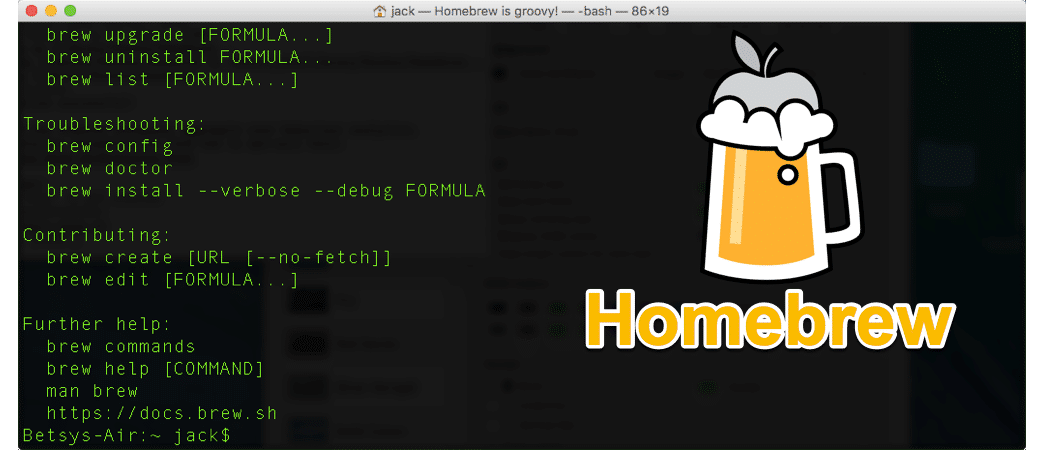

- #Remove homebrew from mac for mac os
- #Remove homebrew from mac install
- #Remove homebrew from mac update
- #Remove homebrew from mac manual
This will inform you about the status of Homebrew and will ask you to update a few packages, if required. Run the following command to see if everything is installed fine. Once this command executes without error(if you get any error, post in comment and we will help you out) Running this script requires password, so when it asks for the password, provide your user passowrd and press "Enter"
#Remove homebrew from mac install
To install Homebrew, run the following command, The above command will install command line tools in your computer, or if you already have that installed, it will show the message "error: command line tools are already installed".

To install Command Line Tools, open your terminal(Press Command Spacebar and type in "Terminal" to open the Terminal App) and run the following command. If you have XCode installed on your local environment then you do not need to do anything and can directly jump to the next step. To install and run Homebrew on macOS we need to install Command Line Tools on our mac. Homebrew installs the packages inside this directory, or at times, it installs the packages in their own directory and then symlinks(create soft link) their files into /usr/local/ directoryīelwo we have a step by step guide to install Homebrew on your computer/laptop Whenever we install a new software package or tool, it should be installed in the /usr/local directory, as this is the directory where user specific software packages are installed. Using Homebrew Cask, which is an extensuion of Homebrew, you can even install Binary apps(DMG files).You can install all the UNIX Tools on your macOS using Homebrew.Not only this, you can even use Homebrew to install other softwares like VLC, Google Chrome etc.Install software packages required for setting up local development environment in your macOS.Now to run/execute these scripts you will have to install python in your local computer, again, how will you do that? If you are a mac user, you can use Homebrew.
#Remove homebrew from mac for mac os
Homebrew is a software package manager for Mac OS which can be used to install required packages, libraries etc to setup your local development requirements.Īnother example, if you decide to learn Python, how will you do that? You will use online tutorials to learn the basics of the language and then practice by creating small programs/scripts in python. Also during development, you will have to install these packages in your local computer too. For example, if you develop a web application in Java using Jax-RS API like: Jersey, RESTeasy etc for REST services, then to run this software you must install Java and the other libraries/APIs used on the server.
#Remove homebrew from mac manual
To remove a package that was not installed with Homebrew, you'll need to use a different method, such as manual removal.When we develop a production software(like, eCommerce website, or an SaaS) it's never just one programming language that satisfies all the requirements, and we end up using various libraries and software packages, which we must install on our server for the software to run. If you try to remove a package that is not managed by Homebrew, it won't be able to find the package information in its database, and therefore won't be able to uninstall it.

When using the brew uninstall command, Homebrew checks its own database to locate the package you want to uninstall, and removes it along with any files associated with it. The packages installed with Homebrew are added to the Homebrew database and are kept in separate directories from the ones used by the operating system. Beware that you can’t brew uninstall packages that weren’t installed with Homebrew

Note that this command will also remove any dependencies that were installed alongside the packages you are removing, which means that anything previously installed with Homebrew will be completely removed from your system. The $(brew list) expression will be replaced by the list of currently installed packages.The -force flag is used to remove packages without prompting for confirmation.


 0 kommentar(er)
0 kommentar(er)
